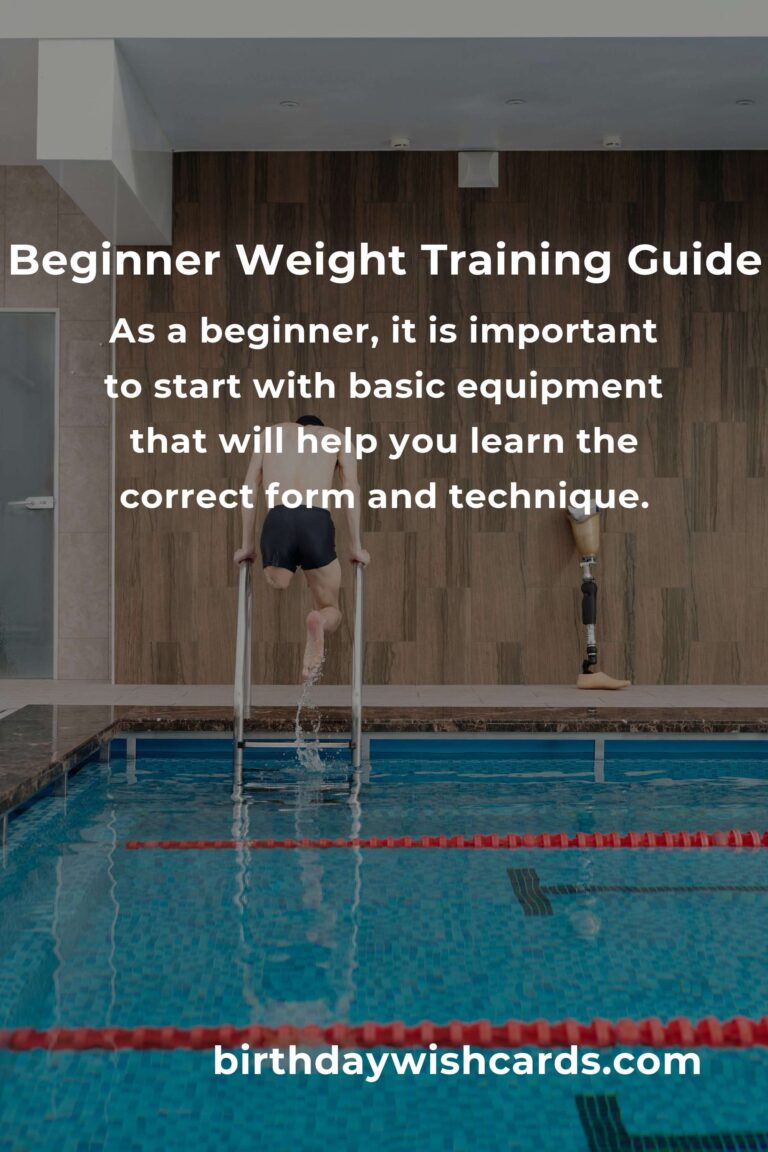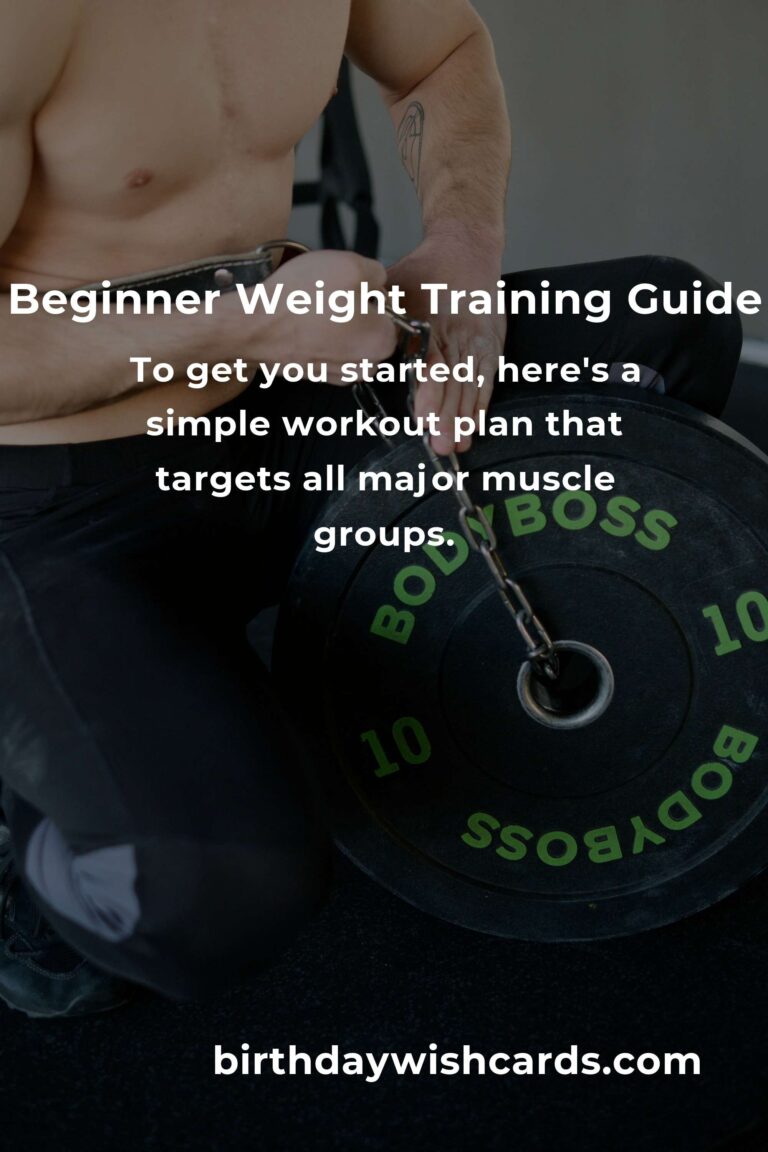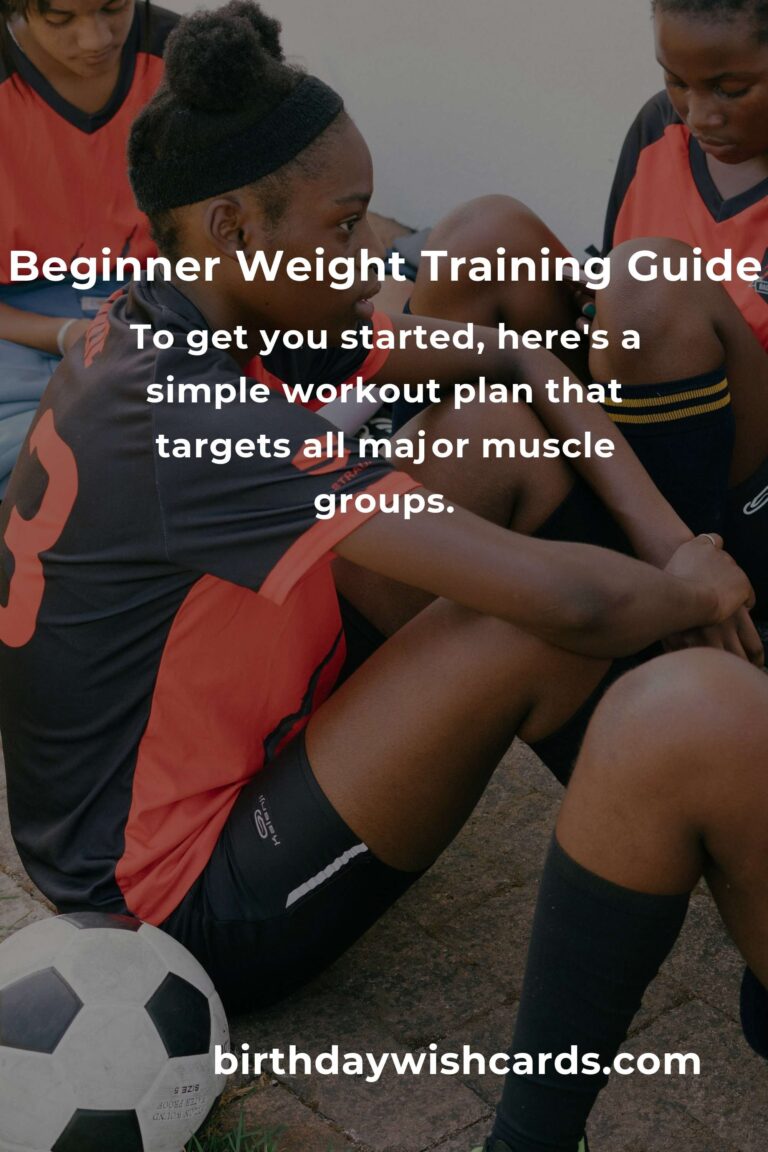
Embarking on a weight training journey is an exciting step towards achieving better health and fitness. For beginners, understanding the fundamentals of weight training is crucial to ensure safety, effectiveness, and long-term success. This comprehensive guide will walk you through everything you need to know to get started with weight training, including benefits, equipment, techniques, and sample workouts.
Understanding the Benefits of Weight Training
Weight training, also known as resistance training, offers numerous benefits that go beyond just building muscle. It enhances strength, improves bone density, boosts metabolism, and contributes to better mental health. Regular weight training can also help in reducing the risk of chronic diseases such as diabetes, obesity, and heart disease.
Moreover, weight training can improve posture, balance, and coordination, making it an essential component of a well-rounded fitness routine.
Essential Equipment for Beginners
As a beginner, it is important to start with basic equipment that will help you learn the correct form and technique. Here’s a list of essential equipment for weight training:
- Dumbbells: A versatile tool for a variety of exercises, dumbbells are perfect for beginners.
- Barbells: These allow for heavier lifting and are great for compound exercises like squats and deadlifts.
- Resistance Bands: Ideal for adding resistance without the need for heavy weights, especially for home workouts.
- Weight Bench: Provides support for many exercises and helps in maintaining proper form.
- Weight Plates: Used with barbells to adjust the weight according to your strength level.
Basic Techniques and Form
Mastering the basic techniques and maintaining proper form is crucial in weight training to prevent injuries and maximize results. Here are some tips to keep in mind:
- Warm-Up: Always start with a 5-10 minute warm-up to prepare your muscles and joints.
- Correct Posture: Keep your back straight, shoulders relaxed, and core engaged during exercises.
- Controlled Movements: Perform exercises slowly and with control to maintain tension on the muscles.
- Breathing: Exhale during the exertion phase and inhale during the relaxation phase.
- Progression: Gradually increase the weight and intensity as your strength improves.
Sample Workout Plan for Beginners
To get you started, here’s a simple workout plan that targets all major muscle groups. Perform this routine 2-3 times a week:
- Squats: 3 sets of 10 reps
- Push-Ups: 3 sets of 10 reps
- Dumbbell Rows: 3 sets of 10 reps per arm
- Plank: 3 sets of 30-60 seconds
- Deadlifts: 3 sets of 10 reps
Ensure you rest for 48 hours before targeting the same muscle group again to allow for recovery and growth.
Tracking Your Progress
Keeping track of your progress is vital to ensure continuous improvement. Record your workouts, note the weights used, and track your reps and sets. Adjust your goals as you progress to keep challenging your body.
Consider taking photos and measurements to visualize your progress over time.
Conclusion
Weight training for beginners is a rewarding journey that can lead to significant improvements in health and fitness. By understanding the basics, choosing the right equipment, and following a structured plan, you will set yourself up for success. Always prioritize safety, listen to your body, and enjoy the process of becoming stronger and healthier.
Weight training offers numerous benefits that go beyond just building muscle.
As a beginner, it is important to start with basic equipment that will help you learn the correct form and technique.
Mastering the basic techniques and maintaining proper form is crucial in weight training to prevent injuries and maximize results.
To get you started, here’s a simple workout plan that targets all major muscle groups.
Keeping track of your progress is vital to ensure continuous improvement.
#WeightTraining #FitnessJourney #BeginnerWorkout #HealthAndWellness













